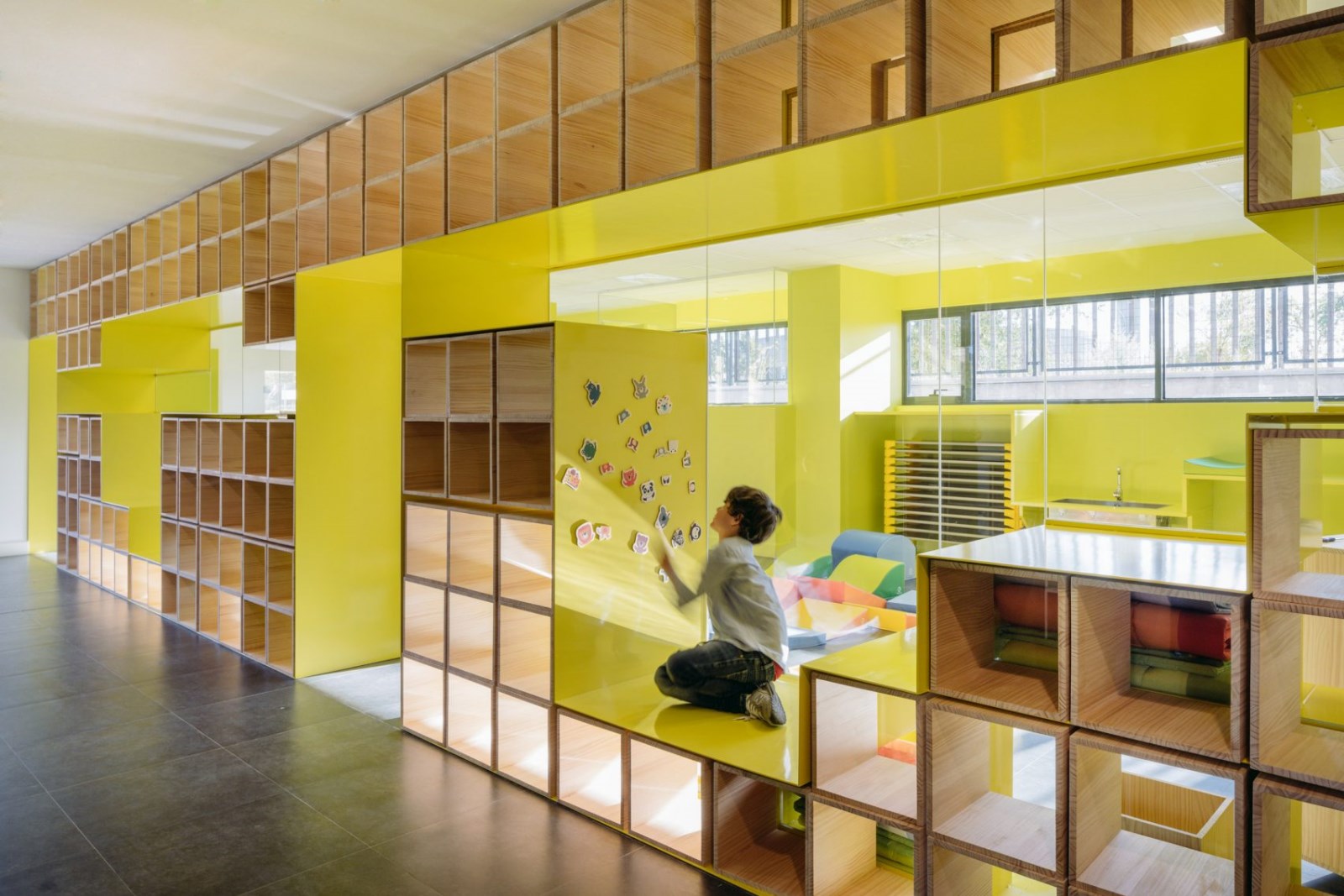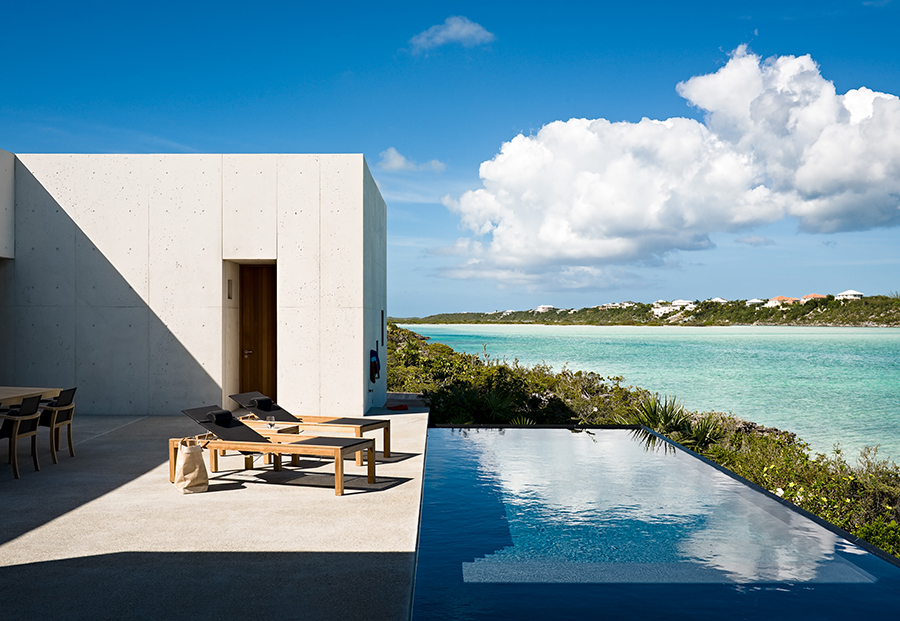UChicago Child Development Center Stony Island Wheeler Kearns Architects
2018-07-17 17:00
© Steve Hall / Hedrich Blessing
史蒂夫·霍尔/海德里希·福星


架构师提供的文本描述。受邻近历史景观的启发,芝加哥大学托儿发展中心-石质岛将自然环境与其建筑和以儿童为中心的课程结合起来。这个设计不是创造一个由合成游戏设备和原色主导的地方,而是让孩子们沉浸在自然世界中,亲自发现首要原则。
Text description provided by the architects. Inspired by an adjacent historic landscape, the University of Chicago Childcare Development Center - Stony Island integrates the natural environment with its architecture and child-centered curriculum. Instead of creating a place dominated by synthetic play equipment and primary colors, the design allows children to be immersed in the natural world to discover first principles first-hand.
© Steve Hall / Hedrich Blessing
史蒂夫·霍尔/海德里希·福星


该建筑,有一个z形脚印,响应狭窄的填充地点,优化有限的阳光曝光率,利用内部和外部之间的视觉联系。户外运动场,平行于两个教室的两翼,提供适合年龄的身体挑战和在自然环境中的探索。东翼,以树皮为侧壁,为婴儿和幼儿提供空间。西翼,一层未涂油漆的水泥板壁板,为五岁以下的大龄儿童服务。
The building, with a z-shaped footprint, responds to the narrow infill site, optimizing limited sun exposure and leveraging visual connections between the interior and exterior. Outdoor play courts, which parallel the two classroom wings, provide for age-appropriate physical challenges and exploration in a natural environment. The eastern wing, clad in tree bark siding, provides spaces for infants and toddlers. The western wing, clad in an unpainted cement board siding, serves older children up to age five.
Section Perspective
剖面透视


一个轻轻折叠的屋顶,在它的东部半部分被植物,引导光到内部和雨水向游戏场地。机翼在中点重叠,其中一个玻璃大厅充当了大楼的情感中心。在这里,大学社区围绕着让孩子们亲身学习大自然的首要原则这一使命而建立的纽带,因为这里有一个由巨大的巨石、石榴石围栏和观赏树环绕的游乐场。
A gently folded roof, vegetated over its eastern half, directs light to the interior and rainwater toward the play courts. The wings overlap at the midpoint, where a glassy lobby serves as the building’s emotional center. Here, the University community bonds around the mission of having children learn nature’s first principles first hand, in view of a play court surrounded by monumental boulders, a gabion stone fence, and ornamental trees.
© Steve Hall / Hedrich Blessing
史蒂夫·霍尔/海德里希·福星


© Steve Hall / Hedrich Blessing
史蒂夫·霍尔/海德里希·福星


无约束开放式计划串联教室的长期灵活性和适应性的杠杆作用。与教室相关的公共支持功能,包括教师工作站、换尿布、儿童厕所和厕所,都放在两个教室之间的共享区域。开放共享安排允许教师在需要时监督其他教室。
Unencumbered open plan tandem classrooms are leveraged for long-term flexibility and adaptability. Common classroom-related support functions including teacher workstations, diaper changing, children lavatories, and toilets, are placed in a shared zone between pairs of classrooms. The open sharing arrangement allows teachers to supervise the other classroom when needed.
© Steve Hall / Hedrich Blessing
史蒂夫·霍尔/海德里希·福星


这个13300平方英尺的设施与其说是“看我一眼”,不如说是“在我里面看”。中心的重点是孩子的视角和户外游戏,而不是与邻近大学大楼的大小或魅力相竞争。雨水从屋顶流到溅水槽。一个南瓜屋,一个活柳树隧道,一个三轮车小径,和沙区和水区,鼓励探索。不同的表面会吸引孩子们爬行、翻滚、骑马、爬山和步行-在与自然互动的同时,学习他们的五种感觉。如果孩子们学会了他们的生活,他们不仅会从大自然中学习,而且他们会学会珍惜它。此外,中心的课程与这一使命完全结合在一起。
The 13,300 square-foot facility is more “look-within-me” than “look-at-me.” Rather than competing with the size or glamour of the adjacent University buildings, the focus of the center remains on the child’s perspective and outdoor play. Rainwater cascades from the roof into splash tanks. A squash house, a live willow tunnel, a trike path, and sand and water zones encourage exploration. Different surfaces invite children to crawl, roll, ride, climb and walk—to learn about their five senses while interacting with nature. If children learn what they live, they will not only learn from nature, but they will learn to value it. Additionally, the curriculum of the center is fully integrated with this mission.
© Steve Hall / Hedrich Blessing
史蒂夫·霍尔/海德里希·福星








































Architects Wheeler Kearns Architects
Location Chicago, IL, United States
Area 13300.0 ft2
Project Year 2013
Photographs Steve Hall / Hedrich Blessing
Category Extension
Manufacturers Loading...































